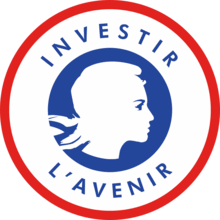Impact of water and mineral stress on Eucalyptus wood properties and xylem genome expression.
Goals
We propose to study interactions between water availability and K and / or Na, on the processes controlling growth, in Eucalyptus on field. The first objective is to study the genome response mechanisms in xylem differentiated under water stress and mineral intake changes. The project presented here aims to contribute to the metabolomics, wood phenotyping and genomic studies. The second objective is to use the information contained in the wood. We propose to study the consequences of environmental changes on the phenotypic responses across the pattern of secondary growth (anatomical, hydraulic and physical, chemical and mechanical properties of wood). We will use the observable changes at intra-tree and at intra-ring levels related to fertilization (Control, + Na, +K), and rainfall factor (100% or 66% of total rainfall). The third objective is to analyze the metabolites present in the wood. Indeed, we want to highlight the correlation between the presence and or quantity of metabolites and the environmental factors. The final and main objective of the project is to perform integrated biology analysis associating wood phenotyping, ecophysiology, metabolomic and genomic data. These approaches have been proved to be a powerful tool to highlight uncharacterized candidates (Mounet et al., 2009). They would improve our knowledge of the physiological mechanisms involved in the functioning and regulation of the woody tissues in relation with the different treatment applied. On a long-term period, by measuring these variables at different ages and period of the year, we will be able to describe the cumulative effects of the treatments applied with time.
Actions
Field experiment is installed, monitored, and surveyed to 6 years old. Data are already available : climate, growth in diameter and height, biomass, wood properties (wet chemistry and density), ecophysiology (sap flow, gas exchanges, …). The growth was surveyed twice per month with band dendrometers, and every 30 minutes by point dendrometers last year respectively on 54 and 36 trees. Every year 48 tress were cute for biomass measurement. From 2011, we were measuring anatomical properties and all data are available in student reports. Differentiating xylem collect has been already conducted in May 2012, 2013 and 2014 at the end of rainy season (2,3 and 4 years old trees). The collected xylem was immediately frozen down in liquid nitrogen then kept at -80°C. We measured transcripts and metabolites on sample collected in 2014.
All the data were analysed separately and by an integrative approach.
A workshop on integrative approach was done in October 2015 at Piracicaba ESALQ-USP with 40 participants.
France-Brasil missions expected were conducted at 100% and at 50% for the Brasil-France mission
Results
List of genes related to drought and fertilisation effects were identified by RNASeq and quantitative PCR approaches
(Ployet et al.).
One paper was published on growth results according to fertilization and rainfall regime, another one on wood
anatomy under water and fertilization, and a last one was published on the provenance x environment interactions
for E. robusta in Madagascar. Three manuscripts were submitted for different international journals and they are
under review.
Seven communications (presentation and poster) were presented during international and national congress and one
was accepted for the next IUFRo congress in September 2017.
Two PhD French students, 2 Malagasy Phd student and 1 PhD Brazilian, 1 post doc Brazilian and 1 master Brazilian
students were involved in the project.
Several funding were obtained thanks to this project: 1 from Fapesp, 1 from CNPq, 1 from CAPES-COFECUB and 1
from ERANET-LAC projects were funded.
Prospects
Transcriptomic, metabolomic and wood properties analysis will be done at the beginning of 2017 in the frame of PHD
of Raphael Ployet and one manuscript will be submitted at the end of this year (Ployet et al). Another one on growth
is preparing (Chambi et al).
These will allow us to perform integrated biology analysis associating wood properties, ecophysiology, metabolomic
and genomic data. In this objective, we will apply and/or developed statistical models to identify correlation between
these variables. These are and will be used for other plants and other studies.
We expect to publish two papers more more in the frame of Mariana Franco Pires PhD, Charlene Arnaud PhD and
Roger Chambi Master
- Project Number1203-003
- Call for project
- Start date :1 October 2013
- Closing date :31 March 2016
-
Research units in the network


